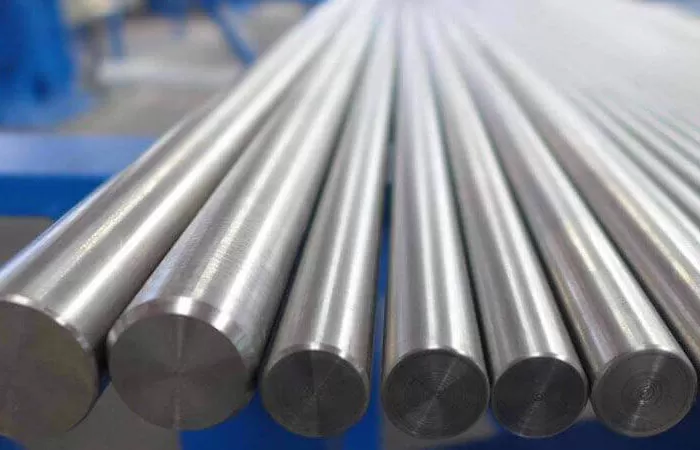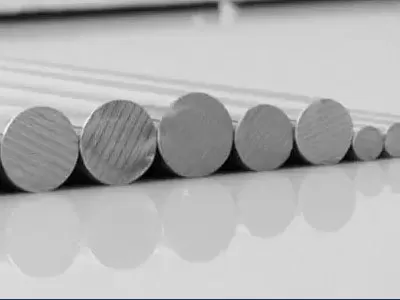
In a pressurized water reactor (PWR), steam generators function as a critical barrier between the nuclear core and the secondary turbine system. These massive heat exchangers transform primary circuit heat into steam to drive electricity production—while simultaneously acting as a pressure vessel and radiation shield.
Among their vital components are tubesheets and tie rods—machined assemblies that hold thousands of heat transfer tubes in place. In this context, material failure is not just costly—it’s a nuclear safety issue.
That’s why Alloy 690 rods have become a cornerstone in modern nuclear engineering. Offering superior corrosion resistance, mechanical strength, and long-term reliability, they are replacing older alloys in the heart of nuclear infrastructure.
PWR steam generators operate under:
High-pressure, high-temperature conditions (up to 15 MPa and 320°C)
Ultra-pure water chemistry to minimize impurities
Aggressive flow-accelerated corrosion, particularly near crevices
Risk of Primary Water Stress Corrosion Cracking (PWSCC), especially in legacy materials
Stress corrosion cracking is triggered when:
Tensile stress is present in the material
Corrosive agents, even in small amounts, infiltrate protective films
Susceptible microstructure (sensitization or phase segregation) exists
Earlier steam generators used Alloy 600 rods and supports, which suffered from:
Cracking at welds and heat-affected zones
Crevice corrosion at tight geometries
Long-term thermal degradation
Alloy 690 (UNS N06690) is a nickel-chromium-iron alloy developed specifically to overcome the weaknesses of Alloy 600 in nuclear environments.
Nickel (Ni): ~58%
Chromium (Cr): 27–31%
Iron (Fe): 7–11%
Trace: Ti, Si, Mn
High chromium content provides excellent resistance to PWSCC
Stable gamma-phase matrix, limiting phase transformation at high temp
Low carbon content prevents sensitization at grain boundaries
Superior thermal stability and mechanical strength
Today, Alloy 690 rods are standard in replacement steam generators (RSGs) globally, and are also used in:
Tubesheet tie rods
Lateral tube support plates
Lower support grid rods
Dowel pins and load-bearing connectors
A major nuclear operator in South Korea retrofitted a PWR unit’s steam generator structure, replacing Alloy 600 rods with Alloy 690 rods and tie components. The goal was to:
Eliminate premature cracking
Reduce inspection frequency
Extend operating license without component replacement
No evidence of PWSCC or surface attack
Mechanical inspections showed <2% dimensional deviation
Regulatory approval for extending refueling outage intervals
Enabled plant to move to 90-day inspection intervals instead of 60
Plant manager noted:
"Alloy 690 gave us the confidence to push inspection boundaries without compromising safety."
Stress corrosion in Alloy 600 originates at:
Grain boundary carbides
Local depletion zones of Cr and Ni
Heat-affected zones after poor welds
Alloy 690 resists this by:
Using low carbon (<0.02%) to prevent intergranular sensitization
Maintaining single-phase gamma microstructure during welding
Forming a dense, stable chromium oxide film even under primary coolant chemistry
In thermal cycling and crevice exposure:
Retains corrosion resistance up to 350°C
Withstands 10⁵+ stress cycles without crack initiation
Avoids localized thinning at support contact points
Alloy 690 rods must meet nuclear-grade quality assurance protocols:
Solution annealed and stress-relieved to ensure grain stability
Precision-machined with tight tolerance threads and surface finishes (Ra < 0.4 μm)
Welded using GTAW (TIG) or electron beam welding with Alloy 52 filler metals
Verified with ultrasonic, dye penetrant, and eddy current NDT techniques
Certified per ASME III, RCC-M, and KEPIC nuclear codes
| Property | Alloy 600 | Alloy 800 | Duplex SS | Alloy 690 |
|---|---|---|---|---|
| PWSCC Resistance | Poor | Moderate | Moderate | Excellent |
| Thermal Aging Stability | Poor | Moderate | Good | Excellent |
| Crevice Corrosion Resistance | Moderate | Moderate | Good | Excellent |
| Regulatory Acceptance | Declining | Limited | Limited | Preferred |
| Weldability (Nuclear QA) | Moderate | Good | Fair | Excellent |
| Design Life (Years) | 10–20 | 20–25 | ~25 | 40+ |
As nuclear power evolves toward modular and advanced reactors, Alloy 690’s role expands:
Small Modular Reactors (SMRs): Compact steam generators, integral supports
High-Temperature Gas Reactors (HTGRs): Oxidizing coolant compatibility
Molten Salt Reactors: Alloy 690’s Cr content offers base resistance to halide-induced corrosion
Fusion reactor blankets: Alloy 690 is under review for tie rods in helium-cooled support systems
Its versatility and proven record make it a first-choice material for high-integrity nuclear assemblies.
In nuclear power, the smallest crack can lead to the biggest consequences. The rods and structural elements inside steam generators are not just support—they are barriers to failure.
Alloy 690 rods stand as silent guardians: engineered to withstand decades of thermal stress, radiation exposure, and chemical attack without compromise.
For the next generation of reactors—and the next generation of engineers—Alloy 690 means safety, strength, and stability.

2025-11-19 14:09:22

2025-11-07 17:27:49

2025-11-05 15:44:44

25th floor, C3 Building, Wanda Plaza, Kaifu District, Changsha, Hunan Province, China